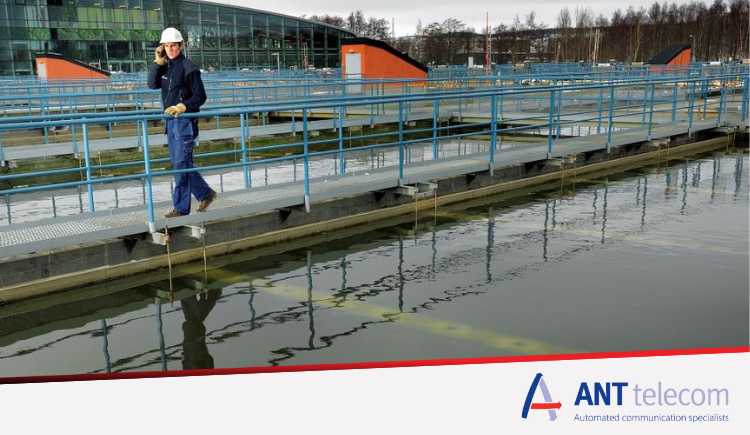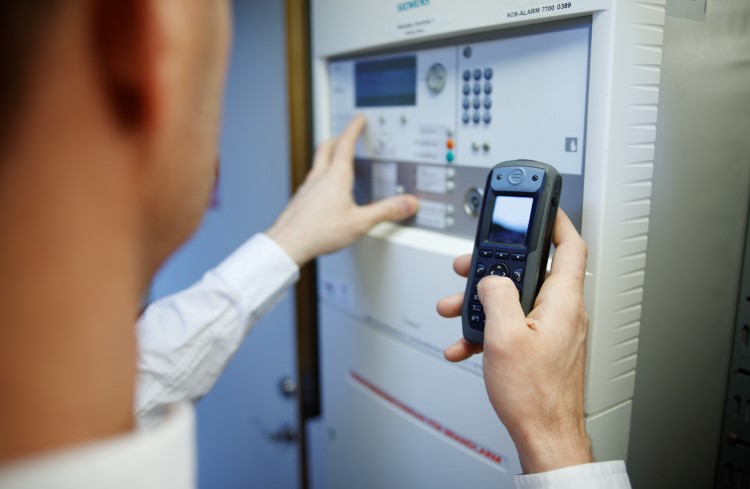
DECT stands for Digital Enhanced Cordless Telephony and IP stands for Internet Protocol. DECT phones are commonly used in peoples’ homes to give users the freedom to make and receive calls on a ‘landline’ anywhere in the home.
To accommodate larger offices and multiple people, a different type of technology is used.
Business IP DECT provides an enhanced version and consists of three main parts; software, base stations and cordless phones.
In this article we’ll explain how IP DECT systems work and highlight ways DECT can support businesses operationally.
IP Base stations
As a rule of thumb, base stations transmit radio signals approximately 300 metres outdoors (direct line of sight) providing the signal is not blocked by buildings, walls, trees etc. Indoors, 30 metres is a good estimate but it does depend on the number and thickness of walls within the building.
Domestic DECT solutions are used by businesses too, usually in small offices or to support a single user that doesn’t need to roam too far from their desk. In multiple user applications, who need roaming capability throughout the site, a professional DECT solution is required.
To ensure site wide coverage of an office or premises multiple base stations are required. These must be positioned strategically throughout, with coverage partly overlapping to avoid any dead spots. IP base stations connect directly to the network and usually come with either 4 or 8 voice channels – which determines the total number of simultaneous calls the base station can manage.
DECT Phones
DECT Phones are cordless and provide users with the freedom to roam site-wide and still remain contactable. Most manufacturers provide a range of DECT phones to appeal to different users’ needs and budget. Designs are usually aimed at office and industrial users, with the latter requiring handsets that are more heavy duty and robust. One or two manufacturers include integrated lone worker functionality and ATEX approved handsets in their range too.
DECT phones should all have roaming and hand-over functionality. Roaming allows users to make and receive calls anywhere on site. When the handset moves out of range of one base station it will automatically register to the next base station with the strongest signal (which isn’t always the nearest one).
Hand-over ensures calls aren’t dropped when users roam between base stations, so calls are handed over from one base station to the next.
Connectivity
DECT systems usually connect to an existing telephone system (PBX), so that DECT and desktop phone users can call each other and collaborate easily; and to utilise the existing phones lines to make and receive calls. This helps to improve site wide communication and optimises the total number of business lines an organisation deploys, reduces monthly rental costs and saves administration time by keeping everything on one bill.
Telephone systems today aren’t always on-premise and are now often cloud based, however, integration to DECT systems are still possible over a network rather than a hardwired connection. To ensure interoperability between the platforms, so features like call transfer, CLI are seamless - an industry standard protocol is used, which in most cases is SIP.
Some PBX providers like Microsoft TEAMS will work with DECT manufacturers directly to ensure their platforms can integrate seamlessly using their own proprietary software integration.
Staff Protection and Lone Worker Alarms
Some DECT systems provide solutions to help businesses adopt lone worker practices. Lone Working is perfectly legal and enables businesses to operate more effectively if, for instance, tasks that only require one person are done alone rather than by two members of staff - as it means that twice as much work can be done in the same amount of time.
Lone working should only be implemented when it is safe to do so. Of course, many tasks and activities carry some level of risk and incidents can happen. When they do, the consequences can be greater for those that work alone as they have no one nearby that can support them. This is where technology can help.
Equipping lone workers with DECT Phones provides users with a means to contact colleagues should an incident occur. It’s not ideal in all situations but it is certainly better than nothing. This is because, in an emergency it might not be possible to dial a number and there are no guarantees that the first person called will answer and help.
To ensure a response, which is key in such situations, some DECT phones are designed with SOS buttons and tilt sensors that when activated send an emergency alarm message to several colleagues, all on their DECT Phones and to a PC based application. The alert shows who raised the alarm and their location, which is either a broad area based on which base station the user was registered with or a more defined location using beacons.
Once a member of the response team accepts the alarm, it becomes their responsibility to support their colleague – which they can easily do by calling or locating them if they do not answer their phone. Once alarms are accepted, further escalations seize and acknowledgement notification messages are sent to keep the rest of the response team informed.
Machine Monitoring and Alarms
DECT systems can also be used to help companies respond and manage machine failures quickly by sending alerts directly to workers that are responsible for repairing the machines e.g. maintenance, the moment the machine fails.
All businesses rely on certain systems, machinery, equipment and appliances to help support their business activity. Some businesses e.g. production, can rely on hundreds of different types of machinery to help produce their line of products quickly and efficiently.

However, when a machine fails it can have a knock on effect and cause production bottlenecks, delays and affect product quality and increase waste – resulting in higher costs and lower profit margins.
To address the issue companies may use a monitoring system (e.g. SCADA, PLC) that monitors specific parameters and reports when there is a problem by triggering an alarm. The alarm could be in the form of a traffic light system situated above each machine, green signifying that the machine is working, red indicates an issue; or an alarm may even be presented on a screen in a manned control room.
In both these scenarios, however, the process to report the alarm to the workers who need to fix the machine is done manually - relying on an operator seeing it above the machine or in the control room before ringing around and finding a member of the team that can deal with the incident immediately.
Alternatively, by integrating the monitoring software to an existing DECT platform provides an automated end to end process and ensures that the moment a machine fails, the team responsible for fixing it are immediately alerted. The integration work is fairly straight forward and cost effective, and it means control room operators can carry out tasks in the plant with the knowledge they will be informed on their DECT phone the moment there is an issue with a critical machine.
Click here to learn more about mobile communication solutions
Access Control
Many companies use gates and barriers to restrict access to their sites to improve security. However, manning security gates can be expensive especially when footfall to the site is low.
Door/gate entry systems provide a cost effective alternative as everyone permitted can easily access the site with a code or card.
Visitors and suppliers can gain entry by liaising with an internal person via the gate phone or intercom. However, when workers fail to answer the access phone, suppliers can be left waiting and after a while may move on to another job.
One of the main reasons staff fail to answer the access phone is because it is not easily accessible by everyone as it is usually installed near the building entrance and reception. When the receptionist isn’t available, visitor-entry-calls get missed.
By integrating the access control platform with an existing DECT system can ensure visitors’ trips aren’t wasted. Calls are presented to (numerous) staff on their DECT phone, which they have on them at all times. Furthermore, once they’ve answered and verified who the visitor is, they can open the security gate without moving from the spot.
If you would like more information or a demonstration on IP DECT, please get in touch. You can find all our contact details by clicking the "contact us" tab at the top right of this page.



